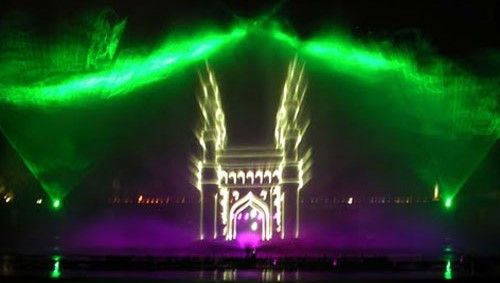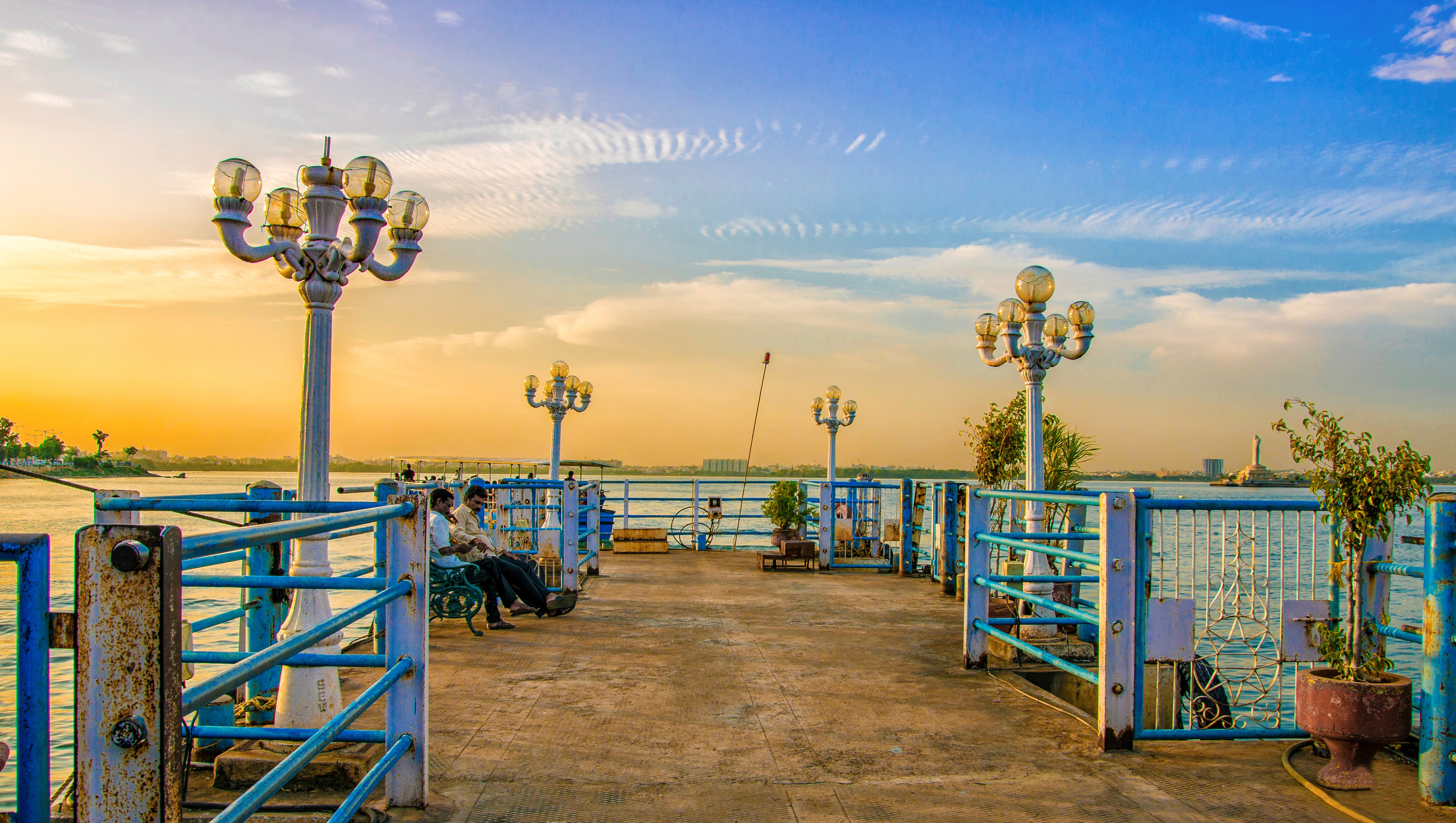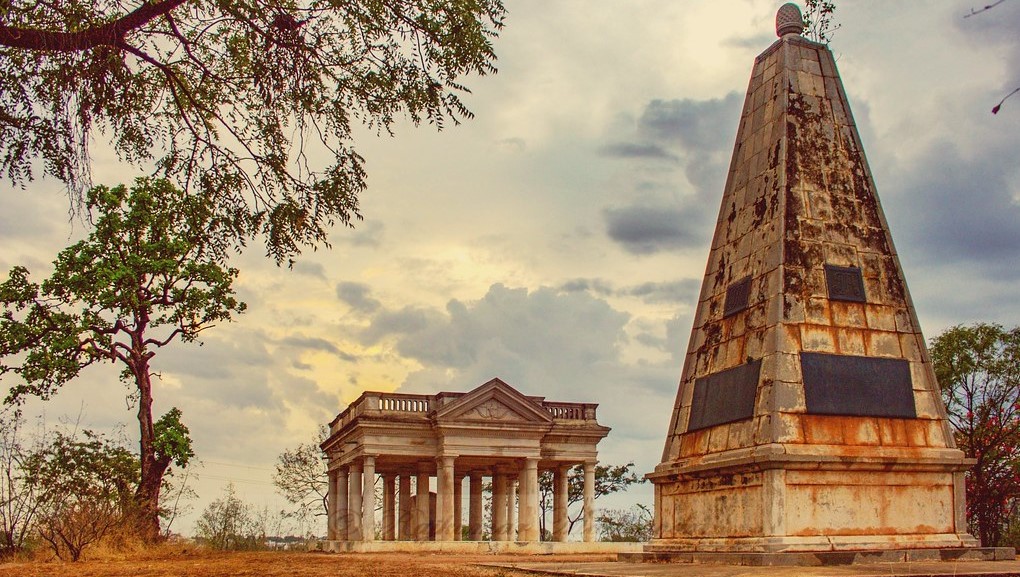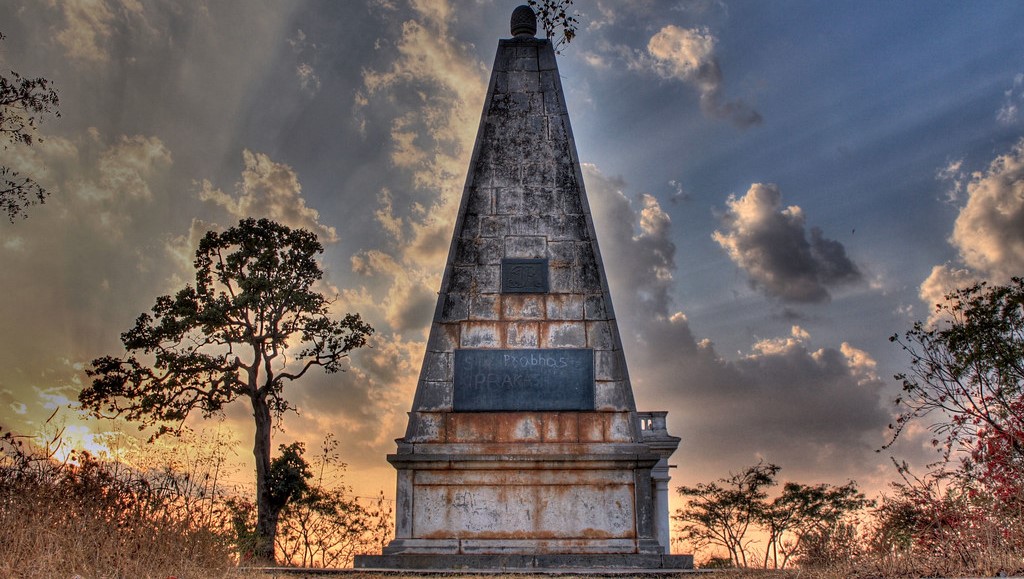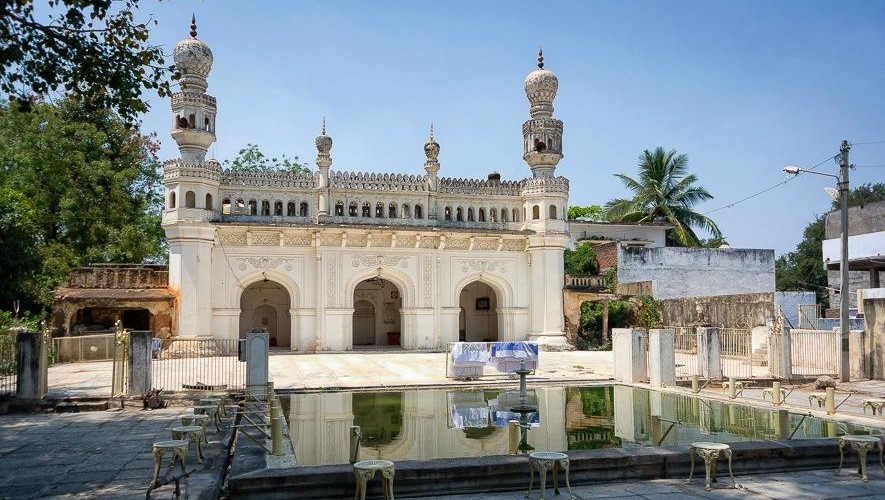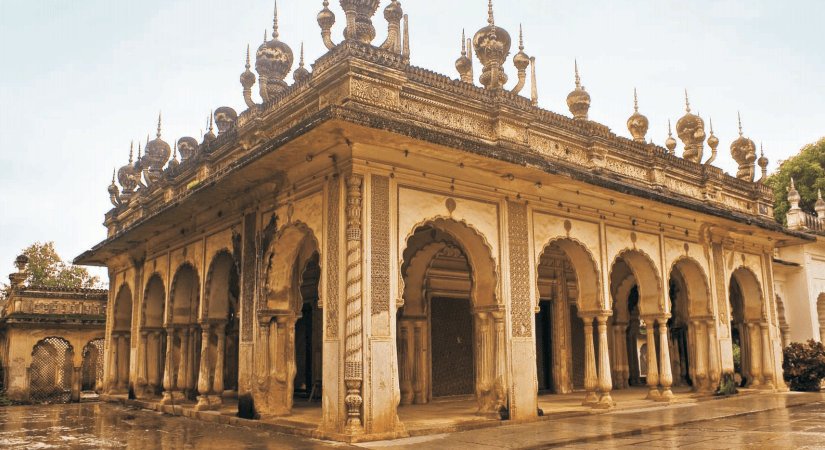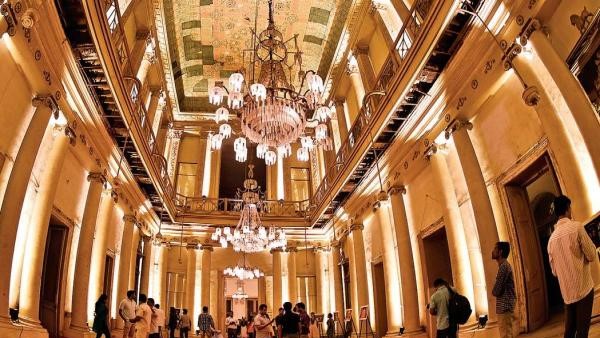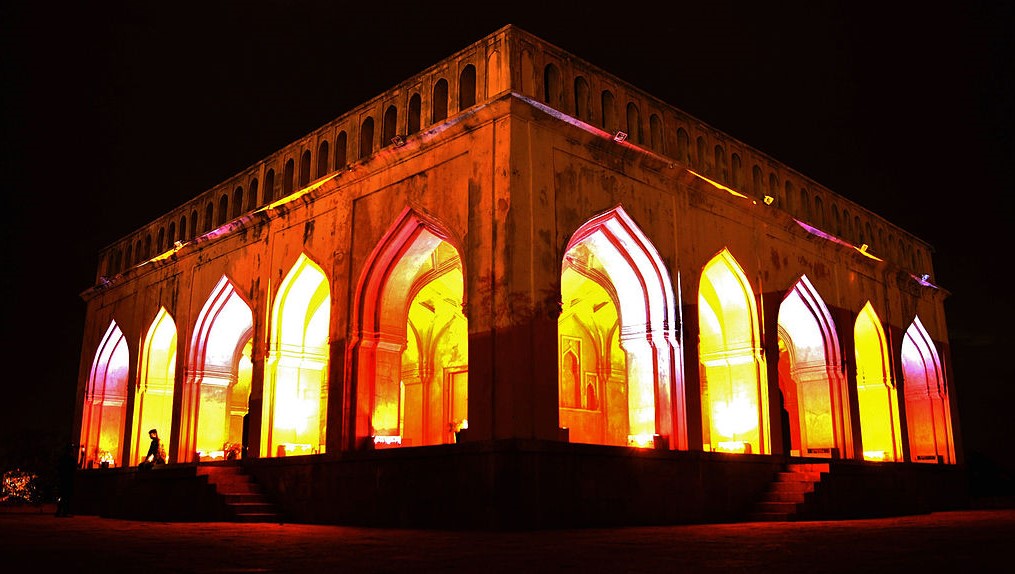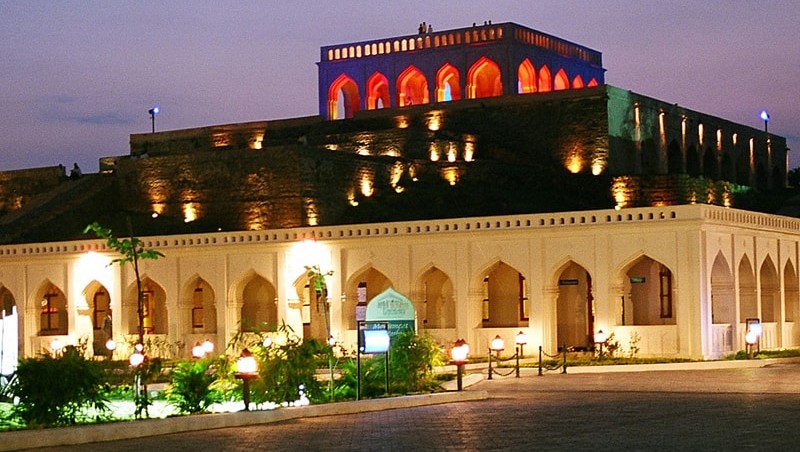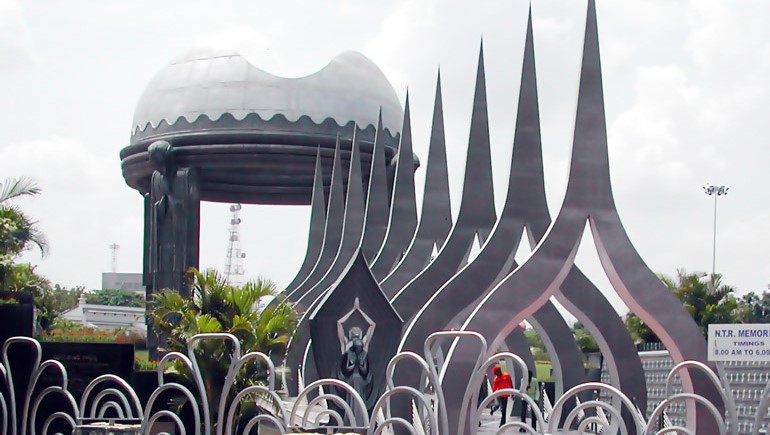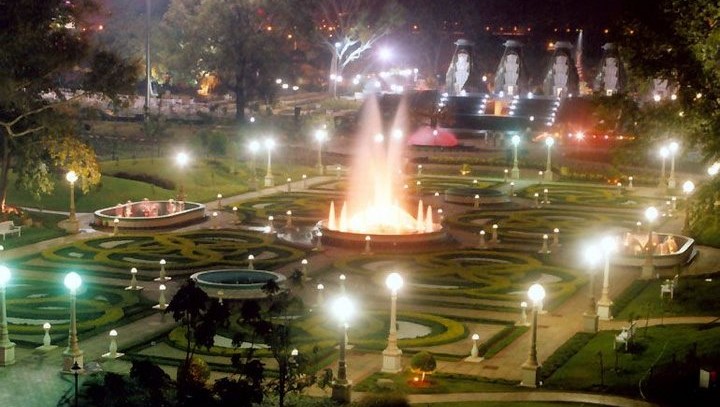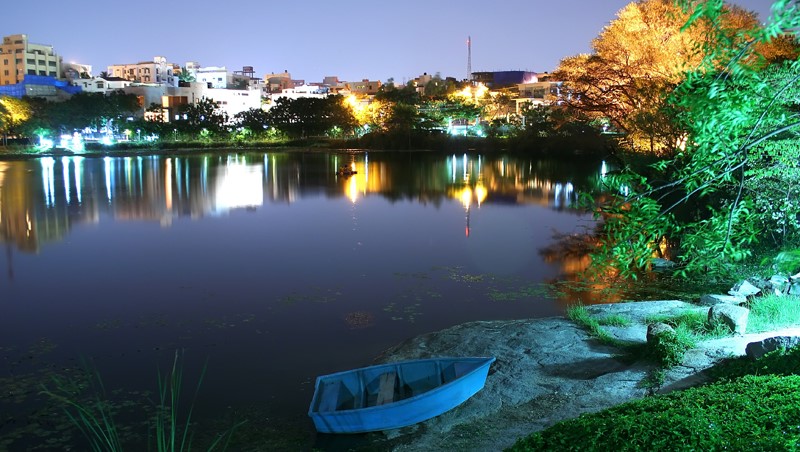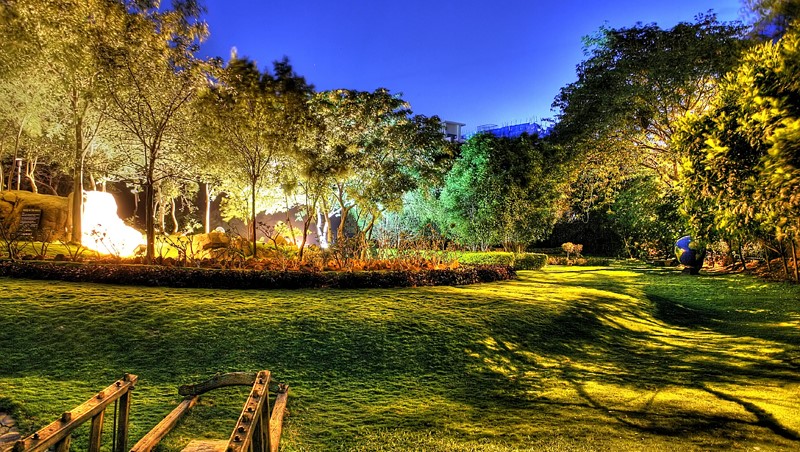Hussain Sagar
Hussain Sagar is a heart-shaped lake in Hyderabad, Telangana, built by Ibrahim Quli Qutb Shah in 1563. It is spread across an area of 5.7 square kilometers and is fed by the River Musi. A large monolithic statue of the Gautama Buddha, erected in 1992, stands on Gibraltar Rock in the middle of the lake.
Hussain Sagar was built across a tributary of the river Musi river in 1563 by Ibrahim Quli Qutb Shah. The lake was named after Hussain Shah Wali, who helped to design it. It is an artificial lake that holds water perennially fed by canals from Musi river. Hussain Sagar was the main source of water supply to Hyderabad before Himayat Sagar and Osman Sagar were built on river Musi.
The Buddha statue was chiseled out of a white granite rock, weighing 450 tons. It was carved by 200 sculptors for two years. The statue was transported to Hyderabad in November 1988. After initial problems, the statue was erected on 12 April 1992 on a red lotus pedestal.
.jpg)
.jpg)
